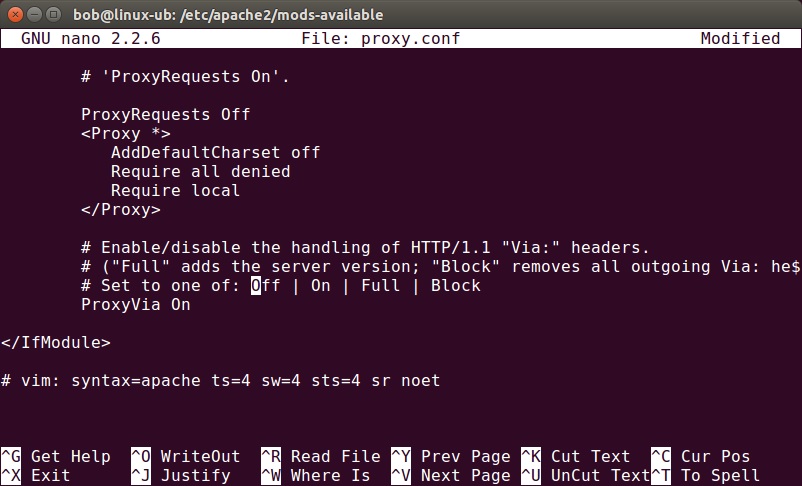Configure Apache as a reverse proxy
Apache can also be configured to serve as a reverse proxy. A reverse proxy appears to the client just like an ordinary web server and no special configuration on the client is necessary. The client makes ordinary requests for content. The reverse proxy then decides where to send those requests and returns the content as if it were itself the origin. Reverse proxies are usually used to provide Internet users access to a server that is behind a firewall or to balance load among several back-end servers.
Here is how we can configure Apache as a reverse proxy:
First, we need to enable the proxy, proxy_http, and proxy_connect modules. We can do that using the a2enmod command:
Next, go to the /etc/apache2/mods-enabled directory and open the file proxy.conf in a text editor of your choice. Uncomment the ProxyRequests On line, the <Proxy *> block, and the ProxyVia Off line. Change the ProxyRequests to Off and ProxyVia to On:
Now, create a new file in the /etc/apache2/sites-available directory. We will call our file reverse_proxy.conf. This is the configuration of the file:
<VirtualHost *:80> ServerName msn.local ProxyPass / http://www.msn.com <Proxy "*"> Require ip 192.168 </Proxy> </VirtualHost>
Enable the website using the sudo a2ensite reverse_proxy.conf command and restart Apache. When the internal client requests the website msn.local, he or she will be redirected to www.msn.com, as specified by the ProxyPass directive.





